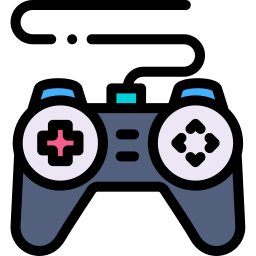
Game Controller / Joystick: External & Peripheral Hardware
A game controller or joystick is an external hardware device used to interact with video games and digital applications. These peripherals are essential tools in gaming environments, allowing users to control characters, vehicles, or systems within a game through physical input. They translate hand movements and button presses into digital signals that the computer or gaming console processes. Game controllers and joysticks have evolved significantly over time, offering advanced features, ergonomic designs, and compatibility across multiple platforms.
Functions and Applications of Game Controllers and Joysticks
Provide interactive input: Game controllers and joysticks serve as the primary input method for many video games, especially in genres such as action, racing, simulation, fighting, and sports. They enable precise and responsive control for character movement, camera angles, vehicle navigation, and combat mechanics.
Enhance user experience: By offering tactile feedback and intuitive button layouts, these peripherals provide a more immersive and engaging gaming experience. Features like vibration feedback, triggers, analog sticks, and customizable buttons contribute to realism and enjoyment.
Support multiple platforms: Game controllers can be used with consoles like PlayStation, Xbox, and Nintendo systems, as well as PCs and mobile devices. Many models support wireless or wired connectivity, making them versatile and adaptable.
Assist in simulation environments: Joysticks are particularly valuable in flight simulators and driving simulators, where they replicate the experience of controlling an aircraft or vehicle. Their design includes directional sticks, throttle levers, and sometimes pedals, offering a realistic control setup.
Enable accessibility: Certain controllers are designed to accommodate users with physical disabilities, offering alternative layouts or adaptive inputs to ensure inclusive gaming experiences.
Useful in non-gaming applications: Joysticks and similar peripherals are also used in professional fields such as robotics, drone piloting, and even in industrial machinery for precision control.
Types of Game Controllers and Joysticks
Standard game controllers: These typically include directional pads, analog sticks, action buttons, and triggers. They are widely used across most gaming platforms.
Joysticks: Focused on directional control with one or more axes, joysticks are essential for flight and simulation games.
Arcade sticks: Designed for fighting games, these mimic the control layouts of traditional arcade machines, offering large buttons and a sturdy joystick.
Specialized controllers: These include racing wheels, flight sticks, rhythm game controllers, and VR motion controllers, each optimized for specific types of gameplay.
Cost and Availability
Game controllers and joysticks are commercial products and not free. They must be purchased separately, though some gaming consoles include a controller by default.
Prices vary significantly depending on brand, functionality, build quality, and compatibility. Basic models are generally more affordable, while premium controllers with advanced features can be quite expensive.
Budget controllers may offer limited functionality or durability, while high-end models often include programmable buttons, superior ergonomics, wireless connectivity, and longer lifespans.
Comparison of Different Types
Wired controllers typically offer lower latency and require no batteries but can limit movement due to cable length.
Wireless controllers provide more freedom of movement and are more convenient, although they may suffer from slight input lag and require regular charging or battery replacement.
Joysticks offer more precise directional input and are ideal for simulation games, but they may not be as versatile as standard game controllers for general use.
Controllers designed for a specific platform (like Xbox or PlayStation) may offer better integration but could have limited compatibility with other systems.
Maintenance and Durability
Regular cleaning of joysticks and controller surfaces can prolong lifespan and improve performance.
Mechanical components such as buttons and analog sticks can wear out over time, especially with intensive use, so choosing a durable model is important.
Protective cases or storage solutions help prevent physical damage when not in use.
Conclusion
Game controllers and joysticks are vital hardware peripherals that enhance interaction and engagement within digital gaming environments. They serve a range of functions, from offering precise input in simulations to supporting diverse gaming platforms. Although they are not free and must be purchased, the wide range of options available allows users to choose based on their preferences, budget, and gaming needs. Whether through a standard gamepad, a high-end flight stick, or a wireless console controller, these devices significantly improve gameplay performance and user satisfaction. Their impact extends beyond entertainment, with applications in training, accessibility, and professional industries. Overall, game controllers and joysticks remain essential tools in the landscape of modern computing and interactive technology.












